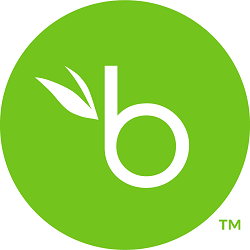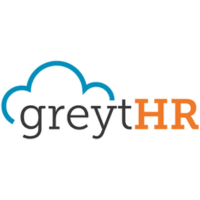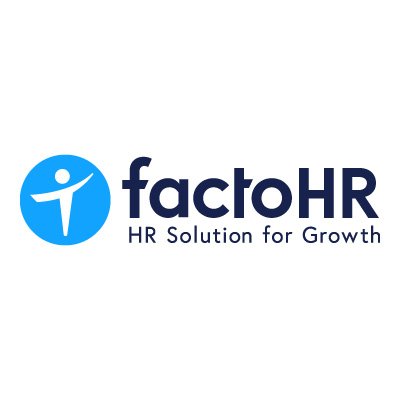AI-Powered HR Software to Simplify End-to-End Human Resource Management
Best HR software
Best HR software includes BambooHR, Zoho People, Wallet HR, Spine HR Suite, Keka, and Zenefits. These HR systems aid organizations in digitizing employee data and enhance collaboration between employees and HR managers.
What is HR Software?
HR software, also known as human resources software or HR management systems (HRMS), refers to a type of software designed to streamline and automate various tasks related to human resource management within an organization. These tasks can include employee recruitment, onboarding, training, performance management, payroll processing, benefits administration, time and attendance tracking, and employee self-service.
HR software typically provides a centralized platform where HR professionals can manage all aspects of the employee lifecycle, from hiring to retirement or separation. It aims to simplify administrative processes, improve efficiency, enhance data accuracy, and ensure compliance with labor laws and regulations.
There are various types of HR software available, ranging from standalone solutions that focus on specific HR functions (e.g., payroll software) to comprehensive integrated systems that cover multiple HR functions in a single platform. Additionally, HR software can be deployed on-premises or accessed through cloud-based solutions, offering flexibility in terms of accessibility and scalability.
Overall, HR software plays a crucial role in modern organizations by empowering HR departments to effectively manage their workforce, optimize HR processes, and contribute to organizational success.
List of 7 Best Softwares
Built as a single system with centralized data, SutiHR is a smart HR management system that adapts to changing business needs today and in the future. The online solution automates the entire hire-to-retire process, eliminating manual work and increasing employee productivity. Enhance your employees' performance with user-friendly tools for setting goals, conducting performance evaluations, and holding individual meetings. Read SutiHR Reviews
Explore various Keka features, compare the pricing plans, and unlock the potential of seamless operations by selecting the right software for your business.
Features
View all SutiHR Features- 360 Degree Feedback
- Applicant Tracking
- Benefits Management
- Compensation Management
- Document Management
- Goal Management
- Learning & Development
- Payroll Management
- Recruitment Management
- Reporting/Analytics
- Time Off Management
- Customizable Reports
- Employee Database
- Employee Management
- HR Management
- Performance Management
- Onboarding
- Self Service Portal
- Third-Party Integrations
- Training Management
- Data Import/Export
Pricing
SutiHR Caters to
- StartUps
- SMEs
- Agencies
- Enterprises
Core HR Software
Zoho People is a cloud-based HR (Human Resources) management software developed by Zoho Corporation. It is designed to streamline and automate various HR processes, including employee management, attendance tracking, leave management, performance appraisal, and more. Zoho People offers features such as employee self-service portals, customizable forms, reports, and integration with other Zoho products as well as third-party applications. It aims to help businesses manage their HR functions more efficiently, saving time and resources. Read Zoho People Reviews
Explore various Keka features, compare the pricing plans, and unlock the potential of seamless operations by selecting the right software for your business.
Features
View all Zoho People Features- HR management
Pricing
Zoho People Caters to
- StartUps
- SMEs
- Agencies
- Enterprises
the all-in-one software for HR, payroll, time & more
ADP Workforce Now® is a comprehensive cloud-based human capital management (HCM) platform developed by ADP (Automatic Data Processing). It is designed to help businesses manage their HR, payroll, talent, time, and benefits administration functions more efficiently. ADP Workforce Now® offers a wide range of features, including Payroll Management, HR Management, Talent Management, Time and Attendance, Benefits Administration, Reporting, and Analytics. Overall, ADP Workforce Now® is designed to streamline HR processes, improve compliance, and enhance the overall employee experience for businesses of all sizes. Read ADP Workforce Now Reviews
Explore various Keka features, compare the pricing plans, and unlock the potential of seamless operations by selecting the right software for your business.
Features
View all ADP Workforce Now Features- HR
- Payroll
- Time & Attendance
- Talent
- HR Outsourcing & PEO
Pricing
ADP Workforce Now Caters to
- StartUps
- SMEs
- Agencies
- Enterprises
Complete HR Software for People
BambooHR is a comprehensive Human Resource Management System (HRMS) designed to streamline HR processes and empower organizations to manage their workforce efficiently. With its user-friendly interface and robust features, BambooHR simplifies HR tasks, enhances employee engagement, and promotes organizational growth. Read BambooHR Reviews
Explore various Keka features, compare the pricing plans, and unlock the potential of seamless operations by selecting the right software for your business.
Features
View all BambooHR Features- HR management
- Payroll Management
- Centralized Employee Database
- Employee Self-Service Portal
Pricing
BambooHR Caters to
- StartUps
- SMEs
- Agencies
- Enterprises
HR & Payroll Management Software
The greytHR Platform offers productivity tools for better people management, simpler HR processes, and professional delivery of HR services. 20,000+ compaines, 2 million+ employees and available in 250+ Cities across India, 20+ countries - UAE, Saudi Arabia, Kuwait, Qatar etc., rely on greytHR. Best for large, medium & small business HR software. Read greytHR Reviews
Explore various Keka features, compare the pricing plans, and unlock the potential of seamless operations by selecting the right software for your business.
Features
View all greytHR Features- Attendance management
- Bonus
- HR & Payroll
- Employee Self Service Management
- Employee Data Base
- Time & Attendance Management
- Payroll Management
- Pay Slip
- Statutory Compliances
Pricing
greytHR Caters to
- StartUps
- SMEs
- Agencies
- Enterprises
HR & Payroll Management Software
factoHR is a modern Human Capital Management (HCM) platform designed to streamline and automate various HR functions within organizations. It provides a comprehensive set of modules and features that cover the entire employee lifecycle from recruitment to retirement. Read factoHR Reviews
Explore various Keka features, compare the pricing plans, and unlock the potential of seamless operations by selecting the right software for your business.
Features
View all factoHR Features- Core HR
- Time & Attendance Management
- Payroll Management
- Performance Management
- Employee Onboarding
- Expense Management
- Employee Self Service
- Retirement Benefits
Pricing
factoHR Caters to
- StartUps
- SMEs
- Agencies
- Enterprises
Best HR and Payroll Management System
Keka HRMS is an employee-centric human resources management and payroll platform that prioritizes user experience and streamlining workflows. Managing human resources, payroll, and talent are critical for any employee-focused organization. These key activities require expertise, which the Keka platform provides. Keka offers one of the most intelligent payroll systems available for Indian companies. The unified workflow enables smooth payroll processing. Talent management and development stand out as major strengths of Keka. The platform automates core HR tasks collaboratively, freeing up time for strategic HR initiatives. Blending modern and traditional techniques, Keka simplifies use for employees and HR teams alike. Created with the Indian workforce in mind, it is tailored to Indian companies. Read Keka Reviews
Explore various Keka features, compare the pricing plans, and unlock the potential of seamless operations by selecting the right software for your business.
Features
View all Keka Features- Asset Management
- Payroll Integration
- Timesheet Management
Pricing
Keka Caters to
- StartUps
- SMEs
- Agencies
- Enterprises
FAQs of HR software
HR software offers numerous benefits, including increased efficiency in HR processes, improved accuracy in data management, enhanced compliance with labor laws and regulations, better employee engagement through self-service portals, and streamlined communication between HR and employees.
HR software helps streamline the recruitment process by enabling job posting on multiple platforms, managing candidate applications, scheduling interviews, and tracking applicant progress. It also often includes features for resume parsing, candidate assessment, and integration with job boards and social media platforms.
Key features to consider when evaluating HR software include applicant tracking, onboarding tools, performance management, payroll processing, benefits administration, time and attendance tracking, employee self-service portals, reporting and analytics capabilities, and compliance management features.
Yes, HR software comes in various forms and can be scalable to suit the needs of small businesses. There are many affordable and user-friendly options available specifically tailored for small and medium-sized businesses (SMBs) that offer essential HR functionalities without overwhelming complexity.
On-premises HR software is installed and maintained locally on the organization’s servers, requiring upfront investment in hardware and IT infrastructure. In contrast, cloud-based HR software is hosted on remote servers and accessed via the internet, offering greater flexibility, scalability, and accessibility from anywhere with an internet connection.
Contents
- 1 Why Do Companies Need HR Software?
- 2 How Does HR Software Work?
- 3 Key Benefits of HR Software
- 4 Key Features of HR Software
- 5 Types of HR Software
- 6 Benefits of Using HR Software
- 7 How to Choose the Right HR Software
- 8 Pricing and Cost Considerations
- 9 Implementation and Onboarding
- 10 Data Security and Compliance
- 11 Future Trends in HR Software
In today’s fast-paced business environment, having the right HR software is crucial for organizations of all sizes. Whether you’re a small startup or a large enterprise, implementing the best HR software can streamline your processes, improve employee engagement, and drive overall business success. This comprehensive guide will walk you through everything you need to know about HR software, from its core features to the top solutions available in the market.
Every firm requires HR software to manage its employees and streamline operations. While several HR systems are available, choosing the one that best meets your needs is critical.
This tutorial will explain HR software in-depth and help you choose the best one for your organization.
Why Do Companies Need HR Software?
HR software automates routine tasks, saving HR teams significant time. It streamlines key processes like:
- Paid time off tracking
- Goal setting
- Recruiting
- Onboarding
- Training
This enables HR staff to focus on more strategic initiatives. Software also provides real-time analytics into workforce data.
How Does HR Software Work?
HR software centralizes employee information and automates tasks like:
- Applicant tracking
- Payroll
- Benefits enrollment
- Performance reviews
- Learning management
Core HR data remains secure in the cloud. Users access relevant modules through desktop or mobile. The system reduces manual work, ensures compliance, and provides insights.
Key Benefits of HR Software
- Increased efficiency – Automation saves time on administrative tasks
- Reduced errors – Software minimizes mistakes that occur with manual processes
- Accessibility – Data can be accessed anytime, anywhere with cloud-based systems
- Analytics – Reporting provides insights into workforce metrics
- Consistency – Software standardizes HR processes across locations
Key Features of HR Software
The best HR software solutions offer a wide range of features to support various HR functions. Here are some essential features to look for:
- Core HR Management
- Employee database
- Organizational charts
- Document management
- Payroll and Compensation
- Automated payroll processing
- Tax compliance
- Salary structures and bonuses
- Time and Attendance
- Time tracking
- Leave management
- Shift scheduling
- Recruitment and Onboarding
- Applicant tracking system (ATS)
- Interview scheduling
- Onboarding workflows
- Performance Management
- Goal setting and tracking
- 360-degree feedback
- Performance reviews
- Learning and Development
- Training management
- Skills assessment
- Career development planning
- Employee Self-Service
- Personal information updates
- Leave requests
- Benefit enrollment
- Analytics and Reporting
- Customizable dashboards
- Data visualization
- Predictive analytics
Types of HR Software
HR software can be categorized into three main types:
- Human Resource Information System (HRIS): Focuses on core HR functions like employee data management, payroll, and benefits administration.
- Human Resource Management System (HRMS): Expands on HRIS functionality to include features like performance management and employee engagement tools.
- Human Capital Management (HCM): The most comprehensive solution, offering advanced features like workforce planning and predictive analytics.
Benefits of Using HR Software
Implementing the best HR software can bring numerous benefits to your organization:
- Increased Efficiency: Automate time-consuming tasks and streamline workflows.
- Improved Data Accuracy: Centralize employee data and reduce manual errors.
- Enhanced Employee Experience: Provide self-service options and easier access to information.
- Better Decision Making: Gain insights through advanced analytics and reporting.
- Compliance Management: Stay up-to-date with regulatory requirements and reduce compliance risks.
- Cost Savings: Reduce administrative costs and optimize resource allocation.
How to Choose the Right HR Software
Selecting the best HR software for your organization involves several key steps:
- Assess Your Needs: Identify your specific HR challenges and goals.
- Define Your Budget: Determine how much you’re willing to invest in HR technology.
- Evaluate Features: Compare the features offered by different vendors against your requirements.
- Check Integration Capabilities: Ensure the software can integrate with your existing systems.
- Read User Reviews: Look for feedback from businesses similar to yours.
- Request Demos: Try out the software before making a decision.
- Consider Scalability: Choose a solution that can grow with your business.

Pricing and Cost Considerations
HR software pricing can vary widely depending on the vendor, features, and deployment model. Here’s a general overview of pricing structures:
- Per-Employee Pricing: Charged monthly or annually based on the number of employees.
- Flat-Fee Pricing: A fixed monthly or annual fee, regardless of the number of employees.
- Tiered Pricing: Different price points based on feature sets and company size.
- Custom Pricing: Tailored pricing for enterprise-level solutions.
When budgeting for HR software, consider these potential hidden costs:
- Implementation and setup fees
- Data migration costs
- Training and support fees
- Add-on features or modules
- Integration costs with other systems
Implementation and Onboarding
Successfully implementing HR software requires careful planning and execution. Follow these steps for a smooth transition:
- Create an Implementation Team: Assign roles and responsibilities.
- Develop a Timeline: Set realistic milestones for each phase of implementation.
- Prepare Your Data: Clean and organize your existing HR data for migration.
- Customize the System: Configure the software to match your processes and workflows.
- Train Your Staff: Provide comprehensive training for HR staff and employees.
- Test the System: Conduct thorough testing before going live.
- Go Live and Monitor: Launch the system and closely monitor its performance.
Data Security and Compliance
Protecting sensitive employee data is crucial when using HR software. Look for vendors that offer:
- Data Encryption: Both in transit and at rest
- Access Controls: Role-based permissions and multi-factor authentication
- Compliance Certifications: SOC 2, GDPR, CCPA, etc.
- Regular Security Audits: Third-party security assessments
- Data Backup and Recovery: Robust backup systems and disaster recovery plans
Future Trends in HR Software
Stay ahead of the curve by keeping an eye on these emerging trends in HR technology:
- AI and Machine Learning: Predictive analytics for talent management and decision-making
- Remote Work Support: Enhanced tools for managing distributed workforces
- Employee Wellness: Integrated mental health and wellbeing features
- Continuous Performance Management: Real-time feedback and goal tracking
- Diversity, Equity, and Inclusion (DEI): Advanced analytics and tools to support DEI initiatives
Choosing the best HR software for your organization is a critical decision that can significantly impact your workforce management and overall business success. By understanding the key features, benefits, and considerations outlined in this guide, you’ll be well-equipped to select a solution that meets your unique needs and drives your HR processes forward.
Remember to assess your requirements carefully, evaluate multiple options, and leverage free trials or demos before making a final decision. With the right HR software in place, you can transform your human resources management, improve employee satisfaction, and position your organization for long-term success in the ever-evolving business landscape.






